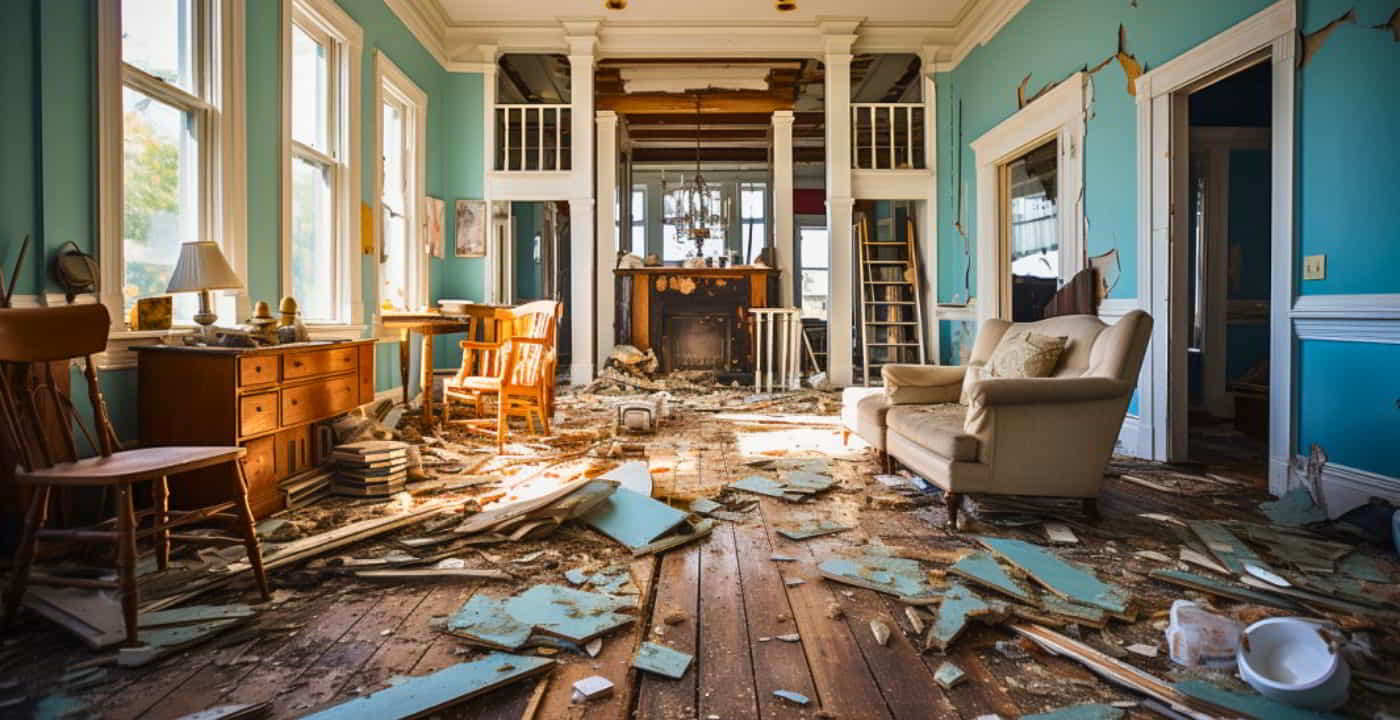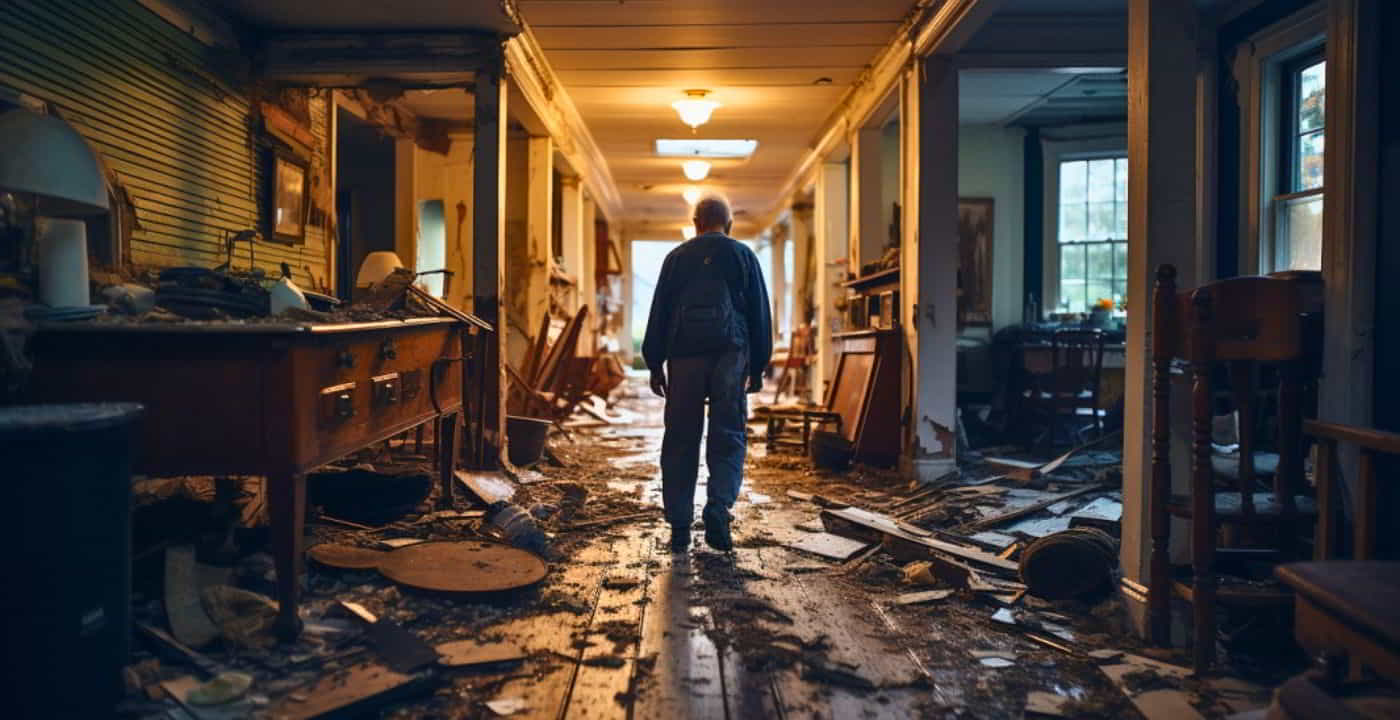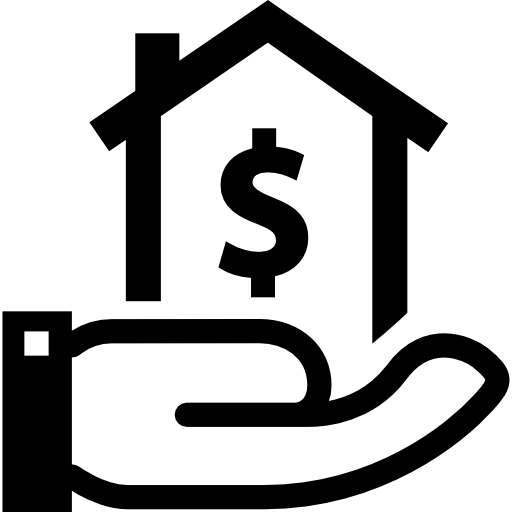We’ve heard all the fixer-upper nightmare stories, but selling your old house doesn’t have to be a hair-raising experience.
Discover how to sell your old house with our easy-to-follow, 5-step guide. Whether your property needs a bit of TLC or a spruce-up before selling, this guide will help you sell your house while keeping cash in your pockets.
Key Notes
- Thoroughly evaluate your home’s condition, noting visible damage like peeling paint, outdated fixtures, and structural issues.
- Conduct a cost-benefit analysis to help you decide on repairs versus selling as-is.
- Be prepared for a longer time on the market and potentially lower offers due to necessary repairs.
- Highlight your home’s potential while being transparent about its condition.
1. Assess the Condition of Your Home

The first step in selling a house that requires repairs is to assess its current condition thoroughly.
Take note of any visible damage:
- Peeling Paint: Peeling paint suggests underlying issues like moisture problems or age-related wear. Scrape, sand, and repaint the affected areas.
- Outdated Fixtures: Update old fixtures—like lights and faucets—to modernize your home’s look and appeal to buyers. It makes your home look better and adds value.
- Structural Issues: Address serious concerns such as foundation hazards and roof cracks. Hire a professional inspector to identify and fix these issues before listing your home.
You can estimate how much these repairs will cost you by using the Houzz Cost Guide Tool.
Identifying these issues upfront will help you determine the extent of repairs required and plan accordingly.
2. Set Realistic Expectations
It’s important to be realistic when selling your older home. Be prepared to have your old house on the market for much longer than 50 days. It takes a bit longer to attract the right buyer who is willing to take on the necessary work.
Don’t assume that buyers will overlook major flaws or safety hazards in the property. Put yourself in the buyer’s shoes: would you feel comfortable letting a loved one sleep in a mold-infested bedroom?
Offers might be lower to account for the money needed to do the renovations or repairs. If you’re curious about how this could affect your sale, try using a home sale profit estimator tool to get a clearer picture.
It’s not all doom and gloom; if you sell your property at a good price point and show how it can be improved, people might be interested in buying it.
3. Prepare Your Home for Sale

Before listing an old house that needs repairs, it’s important to conduct a thorough assessment:
Identify Necessary Repairs
A recent trend in selling older homes that need repairs involves home buyers taking on renovation projects shortly after purchasing the property. Homes are now looking dated as soon as construction finishes, with buyers moving on to sleeker, more modern designs.
A recent trend in selling older homes that need repairs involves home buyers taking on renovation projects shortly after purchasing the property. Homes are now looking dated as soon as construction finishes, with buyers moving on to sleeker, more modern designs.
Enhance Curb Appeal
Boost curb appeal by investing in landscaping, painting, and minor repairs. Optimize storage and multipurpose rooms to increase value. Focus on upgrades that reduce maintenance and enhance spaciousness.
First impressions matter, so make sure your property looks well-maintained from the outside.
Home Renovation Projects With the Best ROI
| Average price | Average Resale Value | |
|---|---|---|
| HVAC electrification | $17,747 | $18,366 |
| Garage Door Replacement | $4,302 | $4,418 |
| Replace House Siding With Stone Veneer | $10,925 | $11,177 |
| Entry Door Replacement | $2,214 | $2,235 |
SOURCE: Zonda Media’s 2023 Cost vs. Value report
4. Strategies for Pricing and Marketing Your Property
When marketing a house that needs repairs, it’s essential to highlight its potential while being transparent about its condition.
Take Note of Current Property Trends
An emerging trend in home improvement marketing is using the differences between generations in marketing strategies.
For example, millennials who are generally first-time buyers cite affordability/better investment, a better location, and needing more square footage as the top reasons for buying.
Knowing why people buy older homes can help you better position the property when listing it. This includes recognizing the relationship between home buyers and home improvement, as well as the importance of adding value and resonating with consumers on both sides of the home improvement life cycle.
Showcase Potential and Unique Features
Emphasize the property’s character and charm, showcasing its potential to buyers who are willing to invest in renovations.
Conduct a Cost-Benefit Analysis of Repairs
Before deciding whether to sell a house as-is or invest in repairs, it’s essential to conduct a cost-benefit analysis:
- Evaluate the Financial Impact: Assess the cost of necessary repairs against the potential increase in the property’s value. Determine whether the return on investment justifies the expense of renovations.
- Consider the Return on Investment: Focus on repairs that offer the highest return on investment, such as essential fixes that improve safety and functionality or enhancements that enhance curb appeal.
5. Negotiate with Buyers

Be prepared to negotiate with potential buyers, especially if your home needs repairs. Follow these 8 steps to successfully negotiate a sale for your old house:
Know Your Bottom Line
Before you even start negotiating, you need to know your bottom line—the minimum price you’re willing to accept for your home. Consider factors like your outstanding mortgage balance, any repairs or renovations needed, and your financial goals.
Price Correctly
Research comparable properties in your area to get an idea of market trends and prices. Consider the condition of your home and any repairs needed when determining your asking price. Pricing it too high could turn off potential buyers while pricing it too low could leave money on the table.
Highlight the Positives
Emphasize unique features, such as original hardwood floors, spacious backyard, or potential for renovation. Paint a picture of the lifestyle your home offers and why it’s a great investment. By showcasing the positives, you create value and generate interest from buyers.
Be Prepared
Negotiation is a give-and-take process, so be ready to make concessions. Understand that buyers will likely request credits or price reductions based on their inspection findings. Prioritize your must-haves and be flexible on negotiable items.
Remember, it’s not just about getting the highest price—it’s about finding a win-win solution that satisfies both buyer and seller.
Respond Promptly
Timing is everything. Respond to offers and counteroffers promptly to keep the momentum going. Delaying your response could signal disinterest or give buyers the impression that you’re not serious about selling.
Keep Your Emotions in Check
Stay objective and focused on your bottom line, rather than getting caught up in the back-and-forth. Avoid taking everything personally and remember that it’s all part of the transaction.
Get Everything in Writing
Once you’ve reached an agreement with the buyer, make sure to get everything in writing. Have a clear and detailed purchase agreement outlining the terms and conditions of the sale, including any repairs, credits, or contingencies.
Review the contract carefully with your real estate agent or attorney to ensure everything is accurate and in your best interest.
Seal the Deal
After negotiations are complete, and all parties have signed the purchase agreement, it’s time to close the deal. Work closely with your real estate agent, title company, and other professionals to finalize the sale.
Be prepared to address any last-minute issues or concerns that may arise and celebrate once the transaction is complete.
Alternative Option: Selling Your Older Home As-Is
Unlike newer properties, older homes often have unique charm and character that can appeal to buyers looking for a distinctive living space. If you consider selling your house as-is to cash buyers, it’s important to know how much money you might get for it. Selling an older home as-is comes with several advantages:
Reduced Stress and Hassle
By selling the house in its current condition, you can avoid the need for extensive repairs and renovations, minimizing both the time and effort involved in preparing the property for sale.
Faster Sale Process
Older homes in need of repairs typically attract investors and buyers looking for fixer-uppers, leading to a quicker selling process without the delays associated with renovation projects. People who sell their old house as-is usually get between 75% to 95% of what their house would be worth if it was fixed up.
Cost Savings
Selling the house as-is eliminates the financial burden of renovation expenses. Instead of investing money in repairs that may not yield a significant return on investment, sellers can save on costs and potentially increase their overall profit margin.
When a property is listed, you have to pay fees to both the seller agent, and the buyer agent, which is typically 3% each or 6% in total.
Success Rate of As-is House Sales
While fixer-uppers may present challenges, many are successfully sold in their current condition. Recent data from the National Association of Realtors shows that approximately 60-70% of older properties are successfully sold in their current condition.
Researching recent sales of similar properties in your area can provide insight into the likelihood of selling your fixer-upper successfully.
Frequently Asked Questions
Is selling my house as-is the right choice for me?
Selling as-is could be the right pick if you prefer a quick sale or don’t want to invest in repairs.
What can I do to maximize my chances of selling successfully?
You can ensure a successful sale by setting the right price, staging well, and marketing effectively.
What legal requirements do I need to consider when selling as-is?
In the United States, disclosure laws vary by state but generally require sellers to disclose any known material defects to potential buyers. Failure to disclose such information could invalidate the sale and lead to legal consequences.
Conclusion
Selling an old house that needs repairs requires careful planning, strategic marketing, and transparent communication with potential buyers. By considering the advantages of selling an older home as-is and adopting effective pricing and marketing strategies, you can increase your chances of a successful sale.
Whether it’s attracting investors or appealing to buyers seeking a renovation project, selling a fixer-upper can be a rewarding endeavor with the right approach. Contact us to have a cash offer for your old house within 24 hours.





